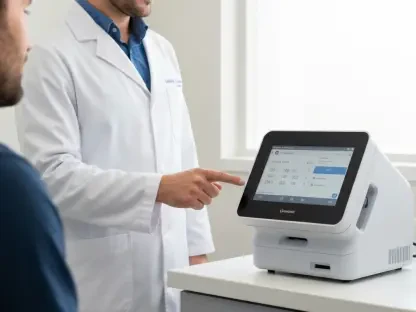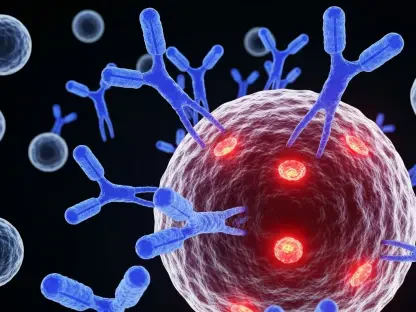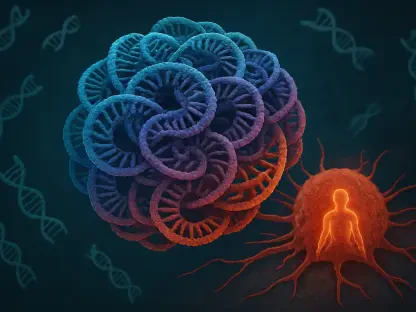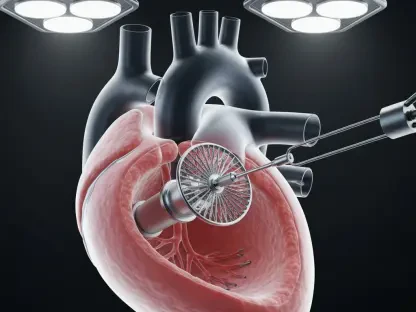Countless individuals struggle with the debilitating condition of chronic lumbar discogenic pain, often resorting to invasive surgical procedures that can bring about complications and lengthy recovery periods. However, there is a beacon of hope on the horizon in the form of an innovative and minimally invasive procedure known as VIA Disc NP. This groundbreaking treatment shows promising results in managing degenerative spinal disc diseases, potentially shifting the current medical landscape by possibly delaying or even preventing the need for surgeries such as disc arthroplasty and spine fusion.
Innovative Treatment
Groundbreaking Non-Surgical Approach
VIA Disc NP represents a significant advancement in non-surgical interventions for back pain management, focusing on the injection of reconstituted nucleus pulposus (NP) tissue derived from donated human disc material. This tissue is injected directly into degenerated intervertebral discs. The procedure is minimally invasive, striving to relieve pain and restore spinal function over an extended period, contrasting sharply with traditional surgical methods that often involve long recovery times and potential complications. This technique has set new expectations for those suffering from chronic back pain, aiming to offer relief without the need for conventional surgery.
By targeting the nucleus pulposus—the central component responsible for maintaining the disc’s structure and function—the treatment works at the core of disc degeneration. The importance of this innovative approach lies in its potential to redefine how chronic lumbar discogenic pain is managed, promising not just symptomatic relief but the possibility of long-term functional improvement and enhanced quality of life for patients. The VIA Disc NP procedure is turning heads within the medical community as it challenges accepted paradigms, suggesting a future where managing degenerative spinal conditions might no longer necessitate invasive surgery.
Clinical Trial Overview
The clinical trial spearheaded by VIVEX Biologics provides compelling evidence regarding the efficacy of the VIA Disc NP treatment. In this study, 28 participants suffering from chronic lumbar discogenic pain—pain that remained unresponsive to varied conservative approaches such as pain medication, physical therapy, chiropractic care, and steroid injections—were enlisted. MRI scans confirmed moderate degeneration across one or two lumbar discs in these patients, providing a robust framework to evaluate the potential of VIA Disc NP against challenging cases that traditional treatments had not satisfactorily addressed.
Each participant received a single dose of 100 mg of VIA Disc NP administered into the affected discs. Subsequently, the participants underwent mandatory follow-ups over a year, specifically after four weeks and at the three, six, and 12-month marks. By focusing on this cohort, the trial sought to measure changes in pain severity and functional abilities over time. The study’s methodology provided valuable data, shedding light on the effectiveness of VIA Disc NP in a controlled environment. This pioneering research sets the stage for further exploration, demonstrating a credible alternative to surgical interventions for managing chronic back pain.
Promising Results
Significant Pain Reduction
The trial findings present an optimistic scenario for individuals grappling with debilitating spinal conditions, highlighting substantial pain reduction. Participants in the trial witnessed a dramatic decrease in their pain levels, as reflected in the Numeric Rating Scale (NRS) scores. Scores fell from an initial average of 7.1 to 3.8 by the 12-month follow-up, indicating that nearly 60% of the participants enjoyed a marked pain reduction, achieving scores of three or less. This outcome offers a tangible measure of relief for patients who had exhausted other treatment options without success.
These results confirm the potential of VIA Disc NP to mitigate pain and suggest it might serve as a sustainable solution for patients previously resigned to accepting chronic discomfort. The decrease in severity score points to the possibility of long-term pain management through minimally invasive means, challenging the notion that invasive surgery is the only effective course of action for such conditions. As a result, this treatment horizon provides hope for those who have long been caught in the cycle of pain management without significant improvement.
Functional Improvement
Alongside pain reduction, the trial documented impressive functional improvements among participants, measured using the Oswestry Disability Index (ODI). Scores on this index, which assesses the degree of disability and impairment a patient experiences due to lower back pain, decreased from 53 at the study’s start to 24 by the conclusion, marking a transition from “severe disability” to a more manageable state. Such changes illustrate not only the alleviation of symptoms but also the enhancement of overall physical functionality.
These developments indicate that VIA Disc NP has the capacity to significantly improve patients’ quality of life. Beyond merely reducing pain, the treatment facilitates greater mobility and independence, encouraging a return to regular activities that chronic back pain might have otherwise curtailed. Its effectiveness in promoting functional recovery underscores the promise VIA Disc NP holds in transforming how degenerative disc disease is approached and managed, offering new possibilities for individuals who had experienced limited success with previous treatments.
Addressing Adverse Effects and Study Limitations
Mild to Moderate Adverse Effects
Despite the positive outcomes, the treatment does present some adverse effects to be mindful of. Participants reported mild to moderate adverse reactions, such as lower back pain, muscle spasms, and thigh pain, following the procedure. However, these side effects were generally transient, resolving without the need for further intervention or treatment. Despite one serious adverse event—an injection site inflammation—the issue was managed effectively and resolved without any additional surgical procedures. The limited nature of these effects suggests that, while not completely devoid of drawbacks, VIA Disc NP is significantly less burdensome compared to traditional surgical options.
These findings highlight the importance of weighing potential risks against benefits when considering new medical treatments. In the case of VIA Disc NP, the likelihood of milder adverse effects aligns with the nature of minimally invasive alternatives and their associated benefits in terms of recovery and overall bodily impact. As with any medical treatment, patient-specific responses can vary, but the documented safety profile of VIA Disc NP reinforces its viability as a treatment option offering considerable advantages over more invasive procedures.
Study Limitations and Future Research
The trial also acknowledged its limitations, factors crucial to interpreting the results accurately. With a relatively small group of participants and the absence of a control or placebo group, the study’s findings might not be fully generalizable to the broader population. The single-arm design of the study, while useful in this exploratory phase, leaves room for enhancement in future investigations. Further studies with larger sample sizes and rigorous control measures are necessary to confirm the long-term efficacy and safety of VIA Disc NP treatment.
Increased research efforts should focus on understanding the nuances of the treatment’s effects across diverse populations and conditions. Longitudinal studies that extend beyond the 12-month period would provide deeper insights into the sustainability of the outcomes observed. Addressing these limitations could pave the way for robust validation of VIA Disc NP’s potential. Thus, while this trial lays a promising foundation, continued research and exploration remain essential to fully realize the procedure’s possibilities.
Transformative Impact
Paradigm Shift in Treatment Approaches
The introduction of VIA Disc NP could signal a major shift in treatment strategies for chronic back pain, moving away from conventional surgeries towards innovative minimally invasive techniques. Its ability to delay or completely avoid invasive surgeries positions it as a promising alternative that could redefine patient care. By offering a pathway to improve patients’ quality of life without subjecting them to extensive surgeries, VIA Disc NP is set to provide new strategies for managing degenerative disc disease and related conditions.
The impact of this innovation goes beyond pain reduction; it addresses a broader narrative of treatment efficiency and patient-centric care. The success of these techniques in offering significant functional improvements reinforces the understanding that managing severe pain conditions need not always involve drastic surgical measures. This paradigm shift advocates for a more nuanced approach, understanding patient needs and outcomes in managing complex conditions like chronic lumbar discogenic pain.
Contribution to Regenerative Medicine
Many people endure the challenging condition of chronic lumbar discogenic pain, often opting for invasive surgeries to find relief. While sometimes necessary, these surgeries can lead to significant complications and extended recovery times, adding further strain to patients already dealing with severe discomfort. In recent developments, there is an exciting alternative emerging—an innovative, minimally invasive procedure known as VIA Disc NP. This cutting-edge treatment yields encouraging results in managing degenerative spinal disc diseases and offers a glimmer of hope for a profound shift in the medical approach to these ailments. With its unique approach, VIA Disc NP may help delay or altogether prevent the need for more drastic interventions such as disc arthroplasty and spine fusion surgeries. This advancement signifies a potential breakthrough, giving those afflicted with chronic pain a chance at a better quality of life without enduring the risks and lengthy recuperation associated with surgical procedures.









